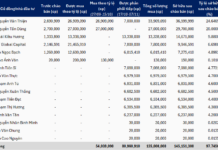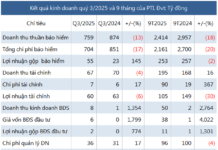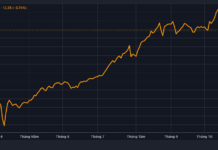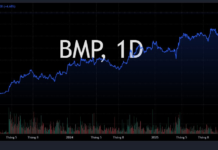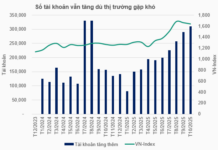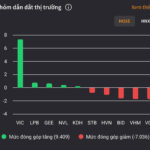Vietnam’s stock market experienced a volatile week, with downward pressure emerging in the final sessions. The VN-Index closed the week at 1,658 points, a 0.52% decline compared to the previous week.
Market liquidity also continued to decrease, with the average trading value on the HOSE reaching approximately VND 33.7 trillion, a nearly 10% drop from the previous week. This reflects investors’ cautious sentiment as the market’s upward momentum has stalled over the past month.
Looking ahead to next week, most experts agree that short-term market risks are high, and the VN-Index may retest the 1,600-point level or even break below it. Therefore, investors should prioritize risk management strategies and avoid FOMO (fear of missing out) buying during low-liquidity rebounds.
VN-Index May Break Below 1,600 Points
Mr. Đinh Việt Bách – Securities Analyst at Pinetree noted that the VN-Index experienced a volatile week, influenced by several significant events. After a positive recovery earlier in the week, the index faced pressure near the 1,700-point peak, leading to declines in the following four sessions due to weakening liquidity.
The market was impacted by notable news, including the market upgrade story and the Fed’s interest rate decision. Despite the Fed’s 25-basis-point cut and Vietnam’s progress toward FTSE criteria, the market remained in the red.
The securities sector, expected to surge, saw widespread declines, disappointing many investors. Additionally, the derivative expiration date and ETF rebalancing in the final two sessions contributed to erratic index movements. The current “sawing the chair legs” phenomenon – slight declines interspersed with sideways movement – is how many investors describe the VN-Index’s current state.
Each session saw a modest 6-point decline, but account performance remained bleak as capital concentrated on blue-chip stocks, particularly the Vin group, with VIC as a standout. Excluding this group, the decline could have been more severe.
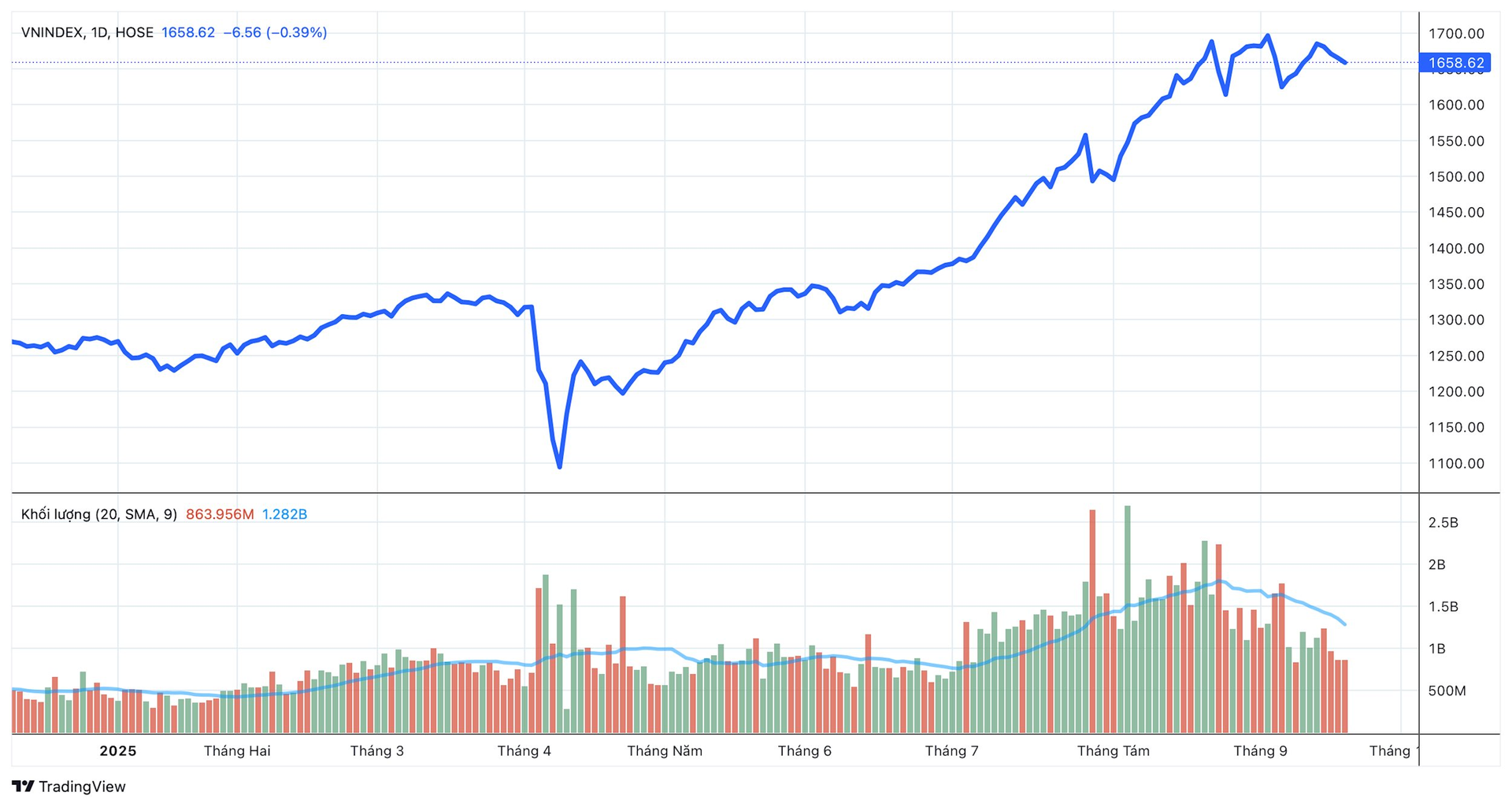
Looking ahead to next week, the VN-Index is likely to continue trading sideways within the 1,603 – 1,700 point range, which it has maintained for nearly a month. If the market remains sideways with low liquidity, a volume breakout session will be needed to establish a clearer trend. Both buyers and sellers are cautious: buyers are waiting for lower prices, while selling pressure remains subdued. On the weekly chart, the VN-Index is closely following the MA5 and finding primary support at the MA10 around 1,604 – 1,605 points, which is also the lower boundary of the current trading range.
In a sideways trend, a reasonable strategy is to buy near the lower boundary and sell near the upper boundary. Notably, the market may break below the 1,603-point support level if negative news emerges next week or selling pressure intensifies, particularly from foreign investors. Investors should limit margin usage and avoid FOMO buying during strong but low-liquidity rallies to minimize risk.
Prioritize Risk Management
Mr. Nguyễn Tiến Dũng, Head of Equity Research at MB Securities (MBS), identified three main sources of current market risk. First, declining liquidity reflects domestic capital’s caution ahead of FTSE’s periodic market classification review on October 7th and the upcoming Q3/2025 earnings season. Second, foreign investors continued large-scale net selling, with a net sell value of VND 6.5 trillion last week, concentrated on high-capitalization stocks, weakening index support. Third, the VN-Index has repeatedly failed to break through the 1,700-point resistance, making profit-taking pressure at strong resistance levels inevitable.
Although the Fed’s rate cut positively impacts Vietnam’s market, both macroeconomically and in terms of foreign capital flows. Lower USD interest rates will reduce VND exchange rate pressure and create opportunities for foreign capital to return to emerging markets, including Vietnam. Additionally, lower rates make Vietnamese stocks more attractively valued from a foreign investor perspective.
However, the impact’s extent depends on the Fed’s rate cut pace and Vietnam’s internal factors, such as GDP growth, monetary policy, corporate earnings, and market transparency.
In the short term, MBS experts consider the 1,650-1,660 point support level critical. If the index holds this level, the market may consolidate and recover. Conversely, a retest of the 1,600-point level is possible. Given current conditions, short-term market risk is relatively high due to increasing profit-taking pressure and insufficient buying strength for a breakout.
In the medium term, market dynamics will depend on factors like upgrade prospects, Q3/2025 earnings results, and domestic and international monetary policy signals, which are generally expected to be positive.
Given the current market conditions, where most stocks have already seen significant gains, the expert advises investors to prioritize risk management over short-term expectations. Maintaining a reasonable stock allocation, limiting high leverage, and selecting stocks with strong fundamentals and positive Q3 earnings prospects will be safer approaches in this phase.
Investors should closely monitor market reactions at support levels. For those with positions above 1,500 points, a reasonable current allocation is around 50% in stocks. If the index loses the 1,650-point support, reducing stock exposure to prepare for buying at more attractive prices is advisable.
Regarding investment opportunities, two major stock groups remain undervalued or near their lows: technology and energy. However, their low valuations do not imply immediate short-term gains, as price increases will depend on whether these sectors’ key risks have been resolved.
For the energy sector, weak global demand remains the primary factor influencing oil prices. If the Fed cuts rates further, boosting sustainable oil consumption and strengthening oil price prospects, the energy sector could enter a sustained uptrend. Similarly, a strong recovery in global IT service demand could signal a rebound for the technology sector.
Overall, the energy and technology sectors are attractively valued for medium- to long-term investment horizons. Sectors with strong macro support, such as securities, banking, real estate, and steel, remain market leaders. If stocks in these sectors offer better discounts in the future, they will present clearer investment opportunities.
Market Experts Outline Key Conditions for Stocks to Rebound to 1,700-Point Peak
The VN-Index is just 35 points shy of its historic peak, yet many investors are nursing significant losses in their portfolios.
Unlocking New Opportunities as the Stock Market Ascends to a Higher Tier
Most experts and brokerage firms maintain an optimistic outlook as the Federal Reserve embarks on its interest rate easing cycle.













